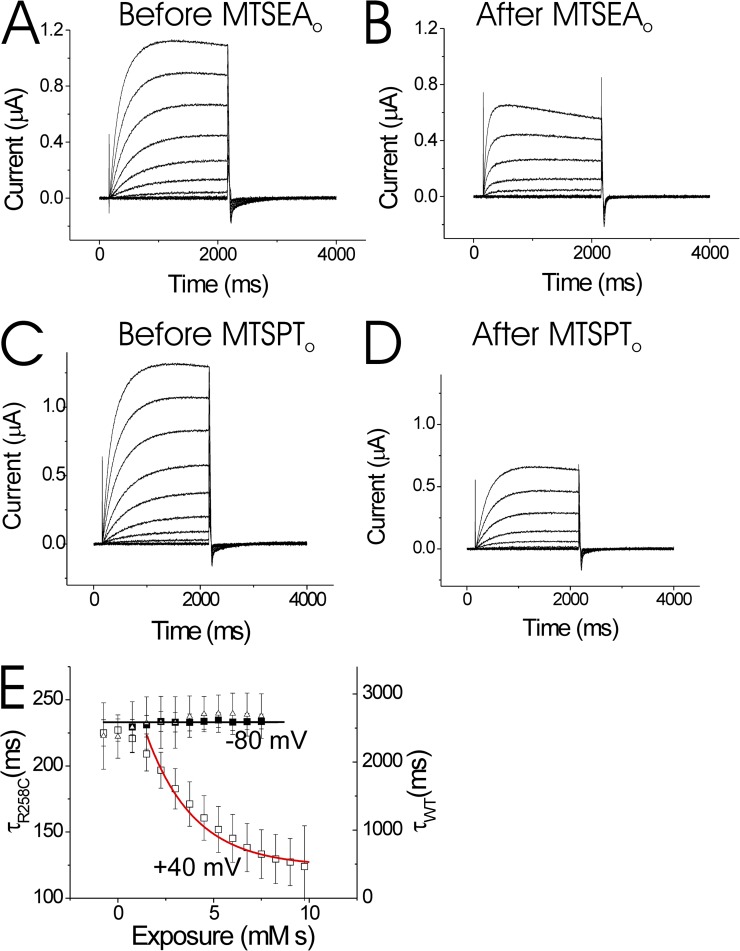
Figure 7. External MTS reagents modify R258C channels only in the open state. (A and B) Currents from an oocyte expressing 258C channels in response to voltage steps from −50 to 50 mV, before (A) and after (B) application of external MTSEA (150 µM). The holding potential was −60 mV. MTSEA was applied at 40 mV for 65 s in between the two recordings, showing that 258C is accessible to the external solution in open channels. pHo = 7.4. (C and D) Currents from an oocyte expressing 258C channels in response to voltage steps from −50 to 50 mV, before (C) and after (D) external application of membrane-impermeable MTSPT. The holding potential was −60 mV. 1 mM MTSPT was applied at 40 mV for 65 s in between the two recordings, showing that 258C is accessible to the external solution in open channels. pHo = 7.4. (E) Sequential 5-s applications of 150 µM MTSEA followed by 10-s washout was applied at the indicated voltage, and then the current was monitored in response to a 40-mV step every 30 s. The rate of MTSEA modification at −80 mV (closed boxes) or 40 mV (open boxes) was measured using the time constant for the current activation (left y axis) for the first 1,000 ms after the start of the 40-mV voltage step. The activation time constant versus the cumulative MTSEA exposure was plotted and fitted to an exponential. As a control, 150 µM MTSEA was applied at 40 mV on WT Ci-Hv1 channels, and the time constant for activation was monitored (open triangles; right y axis). No change in the activation time constant was noticed for WT Ci-Hv1 channels. Error bars are SEM.
Image published in: Gonzalez C et al. (2013)
© 2013 Gonzalez et al. Creative Commons Attribution-NonCommercial-ShareAlike license
Permanent Image Page
Printer Friendly View
XB-IMG-128397